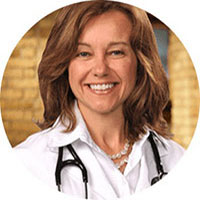Get Easy Health Digest™ in your inbox and don’t miss a thing when you subscribe today. Plus, get the free bonus report, Mother Nature’s Tips, Tricks and Remedies for Cholesterol, Blood Pressure & Blood Sugar as my way of saying welcome to the community!
A cardiologist’s 10 tips for eating heart-healthy on a budget

There’s a pervasive myth out there that healthy foods are prohibitively expensive.
I’m here to tell you that the opposite is true — at least, it can be true!
Most people can actually save money by eating better. If you resolved to improve your eating habits, but don’t want to break the bank, here are my tips on how to do it…
- First and foremost, skip Bite Squad and Door Dash and get re-acquainted with your kitchen. When you do the cooking, you can shave off a lot of the cost. Don’t worry: You won’t have to impress Gordon Ramsay. It’s all about cooking simply with familiar ingredients. A nice resource, if you’re looking to get started, is “How to Cook Everything: The Basics” by Mark Bittman. My sons both swear by it.
- Consider the real cost per serving. A big bag of chips may cost less than a bag of apples, but you’ll likely get fewer actual servings of food from the bag of chips (because who eats only 10 chips at a time?) – while the apples will last you a week and win hands down on nutritional value.
- “Process” foods yourself. Plain oats are much cheaper than ready-to-eat cereals, and you can make a batch of muesli in no time. And I probably don’t need to remind you of the health benefits of whole grains over Raisin Bran and other more processed, sugary options. Likewise, a hunk of cheese is cheaper than a bag of shredded cheese and grating really doesn’t take all that much time.
- Load up on plant-based proteins. Beans, legumes, and tofu cost WAY less than red meat or even chicken and deliver plenty of protein but none of the health risks. Eggs are a very inexpensive protein source and keep well in the fridge but don’t overdo it as whole eggs are high in saturated fat (and cholesterol).
- Look for local, in-season fruits and veggies in the produce aisle. The price of berries can double when the store has to truck them in from Mexico.
- Out of season, head to the frozen aisle to stock up on produce. The costs will be far more favorable and experts agree that when it comes to nutrition, frozen fruits and veggies are comparable to fresh.
- Don’t obsess over organic. If you can afford organic, it’s probably a better choice – but only slightly better. The biggest health benefit comes from switching out highly processed foods for minimally processed ones (not from going from a conventional to organic version of the same thing). If you’d prefer to take the middle road here (which is my approach) focus on the dirty dozen.
- Plan your food. Since I do most of my food shopping on the weekend, I sit down on Saturday morning and plan out what I’m going to eat the following week. That way I’m less likely to stock my fridge with items I don’t end up using – or using in time. Eating healthy can be much more expensive if you repeatedly throw out food past its prime.
- Pack your lunch. Swipe leftovers into lunch-sized containers and avoid the office cafeteria or takeout run.
- Consider the WHOLE cost. Many people are on medications and receive ongoing care for chronic health issues which are caused in part or in whole by diet. We typically don’t think about those expenditures when considering a food budget, but it’s all interrelated. And at Step One Foods we’ve proven that people can reduce their need for medication by eating better.
Can Step One Foods fit within a budget-friendly diet? The answer is a resounding yes!
Since our foods are meant to be a substitute for something you’re eating already, not an add-on, you should come out close to even on cost – if not ahead. For example, a serving of McDonald’s hotcakes (2 g fiber, 600 mg sodium, 6 g saturated fat) costs $2.69 while a serving of Step One pancakes (8 g fiber, 360 mg sodium, 0.5 g saturated fat) costs $1.91. And that doesn’t even take into consideration the fact that our foods can keep you feeling fuller longer and may help reduce your need for medications.
Related: 8 ways to eat for health without breaking the bank
There’s no question that eating healthy on a budget requires some planning and extra work, but it can be done! And given how much food affects health, the rewards are… priceless.












